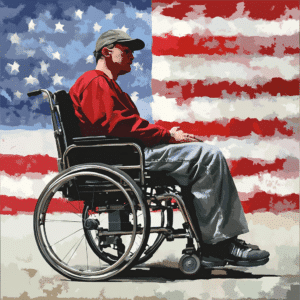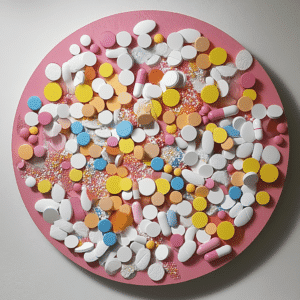The Imperative Role of Prevention and Education
As the stakes rise globally in combating addiction among youth, the twin pillars of prevention and education have never been more crucial. With alarming rates of substance abuse escalating among teenagers, the pressing need to cement robust frameworks for preventing drug use and equipping our young population with pertinent knowledge becomes clear. At Mothers Against, we staunchly believe in proactive measures that can potentially save lives and foster healthier futures.
Integrating Comprehensive Drug Education in Schools
1. Leading by Example: Finland’s Inclusive Curriculum
Finland’s educational system stands as a benchmark in holistic student development. They incorporate age-appropriate drug education starting from primary school, making it part of a broader curriculum that includes social skills and mental health awareness. This integration provides kids with information and coping mechanisms long before they encounter high-risk environments.
2. The Success of D.A.R.E. in Los Angeles
Los Angeles revitalized its Drug Abuse Resistance Education (D.A.R.E.) program by incorporating modern understandings of addiction and behavioral science. Through scenario-based learning and peer mentorship, this initiative has not only enhanced students’ knowledge but also fostered a community culture against drug misuse. Schools adopting similar models realize the importance of Addressing discrimination in recovery by showing students the human side of addiction.
3. Challenges and Opportunities in Implementing Programs
Despite diverse strategies, the integration of comprehensive drug education faces hurdles – from budget constraints to socio-cultural resistance. Schools in socioeconomically disadvantaged areas often struggle for resources, yet this is where the need is most urgent. With community support and advocacy, such as initiatives coordinated by the Archdiocese Of Baltimore, tailored education models can bridge these gaps effectively.
| Category | Types | Description | Examples | Benefits |
| Primary Prevention | Health Education | Preventing the onset of conditions through education on healthful practices. | Immunizations, Health-promoting education | Reduces risk of disease, promotes long-term wellness |
| Safety Measures | Using tools and strategies to prevent accidents and injuries. | Automobile passenger restraints, Bicycle helmets | Decreases rate of injury and fatalities | |
| Education Focus | Peer Pressure Coping | Teaching children to handle and resist peer pressure. | Role-playing scenarios, Group discussions | Empowers students, reduces likelihood of poor decisions |
| Stress Reduction | Techniques to manage and reduce stress and unhealthy thoughts. | Mindfulness exercises, Counseling sessions | Improves mental health, enhances academic performance | |
| Implementing Prevention | Proactive Classroom Techniques | Strategies to prevent undesirable behaviors before they occur. | Positive reinforcement, Clear expectations | Promotes positive behavior, lessens disruptive incidents |
| Specific Areas | Interpersonal Violence/Assault Prevention | Addressing root causes and consequences of violence. | Workshops, Self-defense training | Reduces violence incidents, fosters a safe environment |
| Relationship Violence Prevention | Educating about healthy relationships and warning signs of abuse. | Relationship seminars, Support groups | Improves relationship outcomes, enhances personal safety | |
| Stalking Awareness | Teaching about the dangers and signs of stalking, and how to seek help. | Educational campaigns, Crisis intervention training | Increases awareness, encourages timely intervention |
Nurturing Open Conversations about Addiction
Engaging Parents in the Dialogue
Parental involvement is pivotal in preventing addiction. Workshops, seminars, and family counseling sessions can empower parents to discuss sensitive topics like addiction without stigma. For instance, the Partnership to End Addiction’s campaign “Start with Connection” emphasizes open, empathetic communication between parents and children as a preventive tool.
Programs that Revolutionize Communication Dynamics
Programs like “Above the Influence” have created engaging, youth-centric platforms where teens can share stories and experiences. By aligning with trends in social media and interactive digital platforms, these initiatives make the conversation about addiction relevant and relatable to today’s youth. An example can be seen in engaging apps like Mi Lista para ver, which enable sharing and discussing educational content in a comfortable, digital-friendly setting.
Utilizing Technology in Prevention Efforts
Harnessing Data Analytics for Early Intervention
Advanced data analytics and AI are revolutionizing early intervention strategies. Programs like Massachusetts General Hospital’s “Machine Learning for Dynamics of Substance Use” use predictive modeling to identify at-risk youth before addiction escalates, enabling timely counseling and support interventions.
Developing Apps for Prevention Education
Apps like “My Life My Voice” offer teens access to anonymous counseling, educational resources, and peer support networks. Leveraging the mobile platforms teens engage with daily, these apps present a preventive education panorama catering to digital natives. Such initiatives highlight the importance of Promoting empathy For Addicts, ensuring a comprehensive support mechanism.
Community-Centric Strategies and Their Impact
The Role of Community Coalitions
Community coalitions, such as those formed by CADCA (Community Anti-Drug Coalitions of America), play a pivotal part in local preventive strategies. By pooling resources, knowledge, and expertise, community coalitions can offer specific responses to local addiction challenges, ensuring culturally resonant and effective educational practices.
Business and NGO Collaborations
Collaborations between businesses and NGOs can significantly magnify the impact of prevention and education initiatives. Companies like Starbucks have launched initiatives to employ at-risk youth, providing not only employment but also training programs that include drug education and mental health support. These efforts empower marginalized groups, promoting empathy and inclusion.
Building Resilience and Long-Term Strategies
Emphasizing Mental Health
Addressing mental health as a core component of addiction prevention is crucial. Programs that incorporate routine mental health check-ins, stress management workshops, and resilience training have shown promise. For instance, the “Headspace” initiative in Australian schools integrates mindfulness and mental health literacy into the curriculum, enhancing students’ coping mechanisms.
Engaging Peer Educators
Peer education models, like the ones used by The Recovery Village, leverage the influence peers have on each other. By training students as peer educators, schools can create a ripple effect where informed students advocate and educate their peers, fostering a supportive and informed community. Empowering young people to lead these conversations is a game-changer, setting the stage for Empowering people in recovery through genuine peer support.
A Vision for Securing Our Children’s Futures
Preventing addiction through education is not a strategy but a mandate for safeguarding our children’s futures. By integrating comprehensive curricula, fostering open dialogues, leveraging technology, and engaging communities, we can build resilient, informed, and healthy future generations. The journey is challenging, but with unwavering commitment and innovative strategies, we can turn the tide and ensure our children have the opportunities and knowledge to lead drug-free lives. Encouraging involvement and community support remains essential, showcasing the proactive spirit crucial in our collective effort to combat addiction.
In conclusion, it’s vital to remember the significance of prevention and education in our fight against addiction. Let’s take inspiration from the monster hunter vote—a collective effort to achieve a common goal—and apply that drive to safeguarding our children’s futures. We’re in this together, and through these measures, we strive to create a brighter, healthier tomorrow.
Prevention and Education: Protecting Futures
Engaging Fun Trivia
The foundation of “Prevention and Education” lies in creating a rich tapestry of awareness that weaves together facts, fun, and insightful trivia. Did you know the earliest forms of addiction prevention date back to ancient civilizations? Egyptian hieroglyphics from 3000 BC hint at a keen awareness of the seductive dangers of alcohol and other substances.
But there’s more. Modern advancements showcase fascinating strides, sometimes from unexpected quarters. For instance, while many might wonder where to find the best dispensary near me, they might be surprised to learn about the guidelines these establishments follow to safeguard youths. It’s pivotal in today’s educational endeavors to merge historical wisdom with current practices, creating a comprehensive prevention strategy.
Surprising Insights
Who could’ve guessed that an unexpected twist in education comes from body positivity movements? Initiatives highlighting self-worth, beyond mere looks, play a role in addiction prevention. Campaigns once focused on addressing concerns like having a huge breast have transformed into larger discussions about self-acceptance and mental well-being. It’s incredible how these dynamics interlink!
For a dash of trivia, consider this: schools in Finland rank among the highest globally in education quality, largely owing to their emphasis on emotional and social well-being. These elements are woven seamlessly into their curriculum, ensuring students develop not just intellectually, but holistically. Moving beyond rote learning, this approach embodies the true essence of “Prevention and Education.”
Educational Tactics
Now, let’s pivot to some stellar techniques educators incorporate today. Digital platforms in “Prevention and Education” now use podcasts, video snippets, and gamification to make learning fun and engaging. By incorporating interactive content, students face real-life scenarios and learn the consequences of their choices, which bolsters their decision-making skills.
The glue that holds these diverse strategies together is the shared goal of safeguarding children’s futures. Through the continuous evolution of education methodologies and a blend of traditional wisdom and modern insights, “Prevention and Education” effectively empowers parents and educators to combat the challenges of addiction.
In conclusion, playful trivia and tidbits enhance the mission of prevention, making the journey of protecting our youth’s futures not just informative but also enjoyable. With these nuggets of knowledge, we build stronger, more resilient communities.
Why is prevention important in education?
Prevention in education is crucial because it tackles the root causes of issues like interpersonal violence, helping students make better decisions, cope with peer pressure, and maintain good mental health. It’s about giving kids the tools they need to avoid problems before they start.
What is preventive in learning?
Preventive in learning involves proactive measures to keep undesired behaviors from happening. Teachers use strategies to encourage positive actions and lessen the chance of misbehavior, boosting the overall learning environment.
What level of prevention is education?
Education usually falls under primary prevention, aiming to stop issues before they begin. By teaching kids about possible risks and healthy behaviors, it helps prevent trouble down the line.
Is education part of primary prevention?
Absolutely, education is a key part of primary prevention. It includes teaching kids about health, safety, and well-being to stop problems before they start, like promoting helmet use and immunizations.
What are the 4 reasons why we should focus on prevention?
Focusing on prevention helps save money, improves quality of life, reduces the burden on healthcare systems, and stops smaller issues from becoming larger crises.
What is prevention and why is it important?
Prevention is all about stopping problems before they occur, making it essential in reducing issues like disease and unhealthy behavior patterns. It’s proactive, aiming to maintain overall well-being and minimize risks.
What is preventive method of education?
The preventive method of education includes teaching students about the consequences of their actions, managing peer pressure, and handling stress. It’s designed to foster healthier minds and better decisions early on.
What does prevent mean in teaching?
In teaching, prevent means stopping problems before they start. It’s about using strategies to keep kids on track, making sure small issues don’t turn into bigger ones, and supporting their overall development.
What is preventive discipline in education?
Preventive discipline in education involves using techniques to prevent misbehavior. Teachers set clear expectations and foster a positive classroom environment, focusing on rewards and recognition rather than punishment.
What are some prevention strategies?
Some prevention strategies include teaching conflict resolution, promoting healthy lifestyle choices, implementing anti-bullying programs, and encouraging open communication between students and teachers.
What are the three types of prevention?
There are three types of prevention: primary, secondary, and tertiary. Primary aims to stop problems before they start, secondary targets issues in the early stages, and tertiary focuses on managing long-term effects.
What are the four types of prevention?
The four types of prevention are primary, secondary, tertiary, and quaternary. Primary prevents issues before they begin, secondary catches issues early, tertiary manages ongoing problems, and quaternary avoids over-treatment.
Which is a school based prevention program?
A school-based prevention program could be an anti-bullying initiative or campaigns promoting healthy eating and physical activity. These programs work to create a safer and healthier school environment.
What are the stages of prevention?
The stages of prevention are primary, secondary, and tertiary. Primary focuses on preventing issues, secondary on early detection, and tertiary on managing and improving existing conditions.
What are 5 examples of primary prevention?
Examples of primary prevention include vaccines, health education on nutrition and exercise, promoting safe driving practices, teaching hand hygiene, and advocating for the use of seat belts and helmets.
What are the benefits of prevention?
The benefits of prevention include better health outcomes, lower healthcare costs, improved quality of life, and decreased rates of chronic diseases and other health issues.
Why is prevention better than cure 3 reasons?
Prevention is better than cure because it’s cost-effective, reduces suffering, and improves long-term health outcomes. It’s always easier and cheaper to stop something from happening than to fix it afterward.
Why is prevention control important?
Prevention control is important because it helps manage risks and stops problems before they escalate. It ensures resources are used effectively and improves overall community health and safety.
What is the purpose of prevention programs?
Prevention programs aim to educate and equip people with the knowledge and tools they need to avoid potential problems. They’re about creating awareness and steering people towards healthier, safer choices.




























